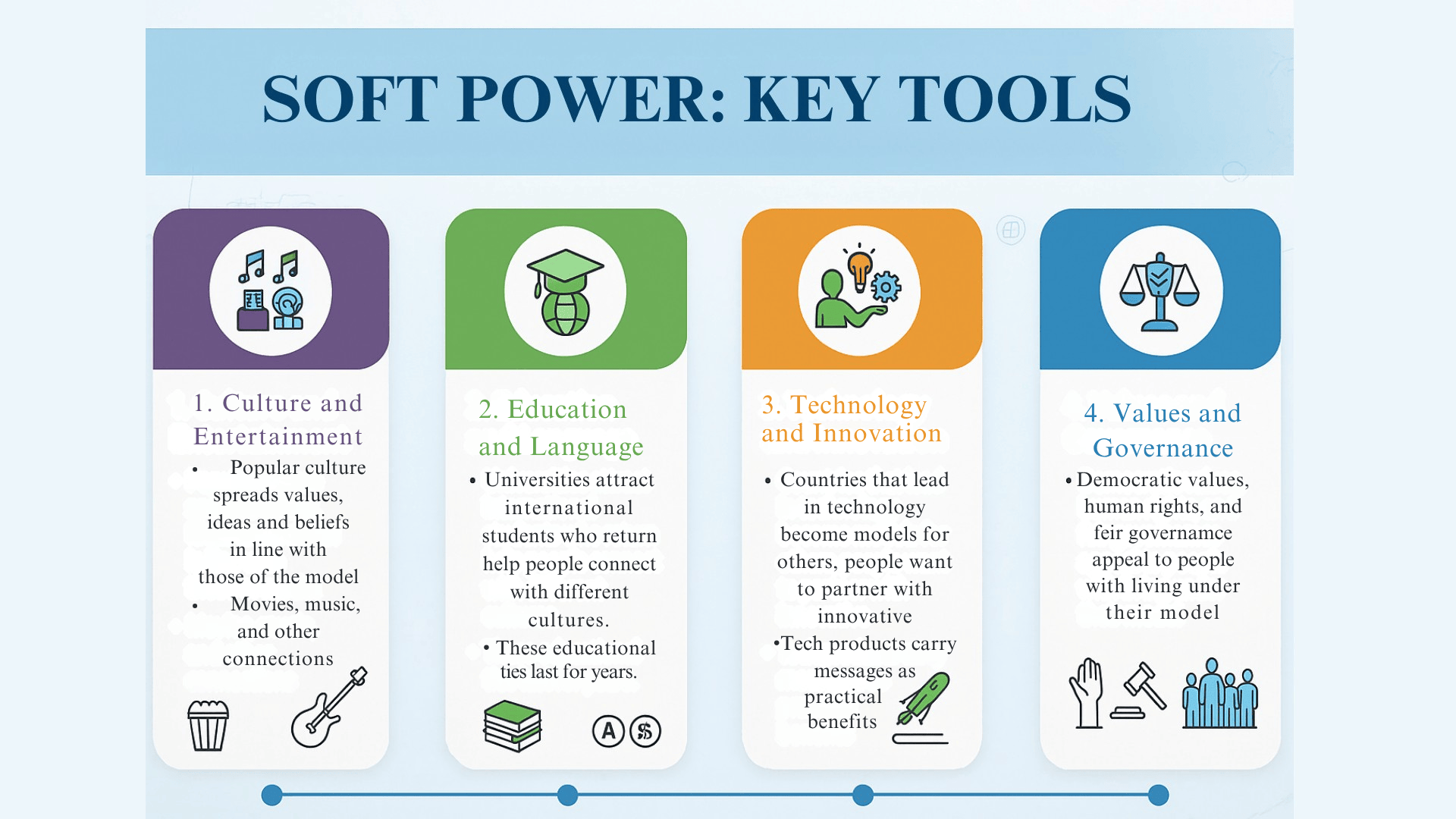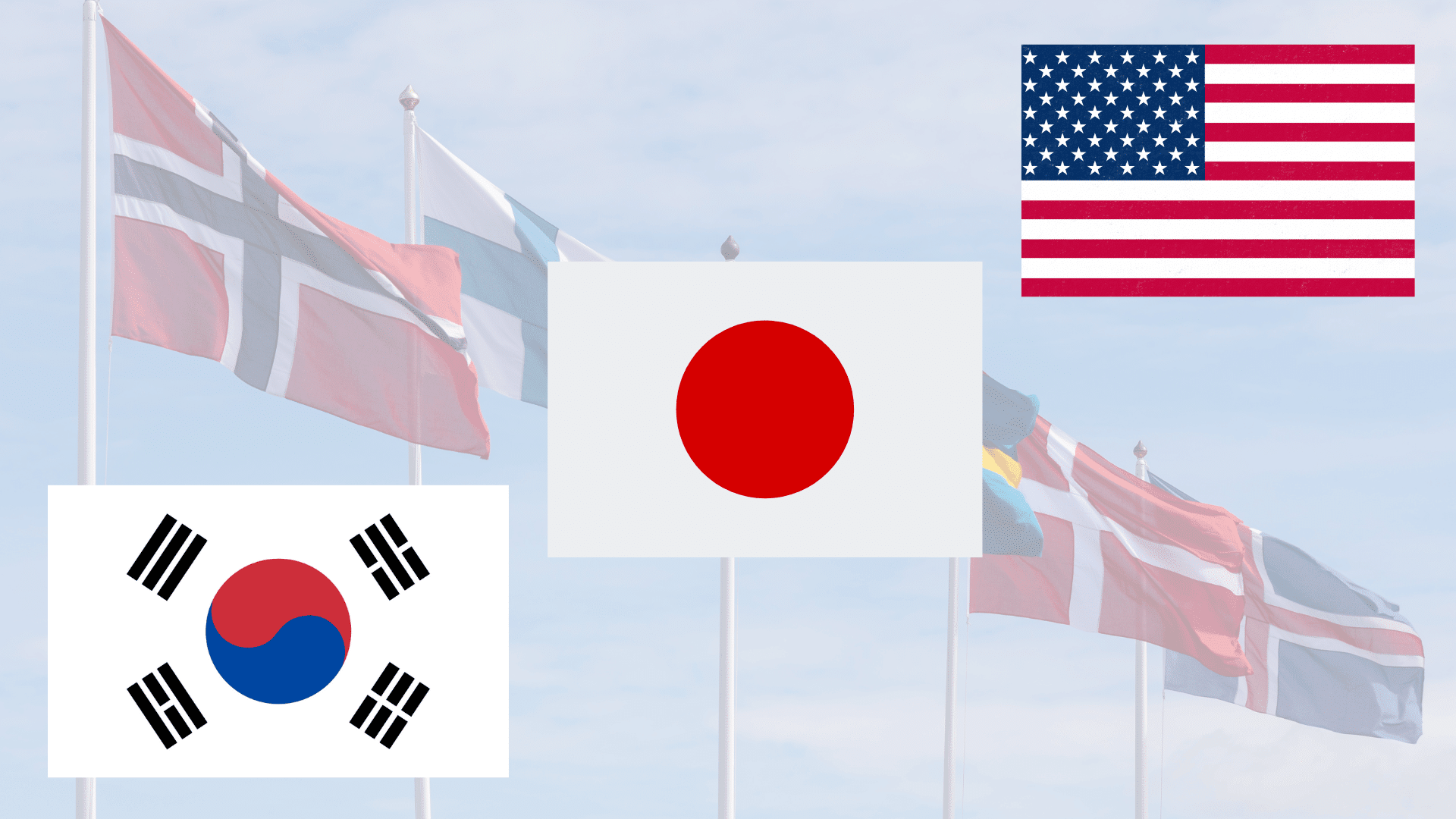Can a country exert influence without resorting to military force? The answer is yes, and it happens every day.
When people around the world watch American movies, learn English, or admire Japanese technology, they experience soft power in action.
Unlike traditional military might, soft power works through attraction rather than force. Countries utilize culture, values, and diplomacy to influence how others perceive and behave.
In this blog, I’ll show you exactly what soft power means, how it differs from hard power, and why it matters in today’s world.
You’ll learn practical examples and see how both large and small nations use this approach to build influence.
What Is Soft Power?
Soft power refers to the ability to influence others through attraction and persuasion, rather than coercion or payment.
Political scientist Joseph Nye coined this term in 1990. He explained that countries can achieve their goals by persuading others to share the objectives.
Soft power comes from three main sources:
- A country’s culture (when it appeals to others)
- Its political values (when it lives up to them at home and abroad)
- Its foreign policies (when others see them as fair and having moral authority)
This form of influence works slowly but can create lasting change. People adopt ideas, values, and behaviors because they find them attractive, not because they’re forced to.
Difference Between Soft Power and Hard Power
Knowing the distinction between soft and hard power helps explain how countries exert influence in different ways. Here is a table that explains the difference between the two in various aspects:
| Aspect | Soft Power | Hard Power |
|---|---|---|
| Method | Attraction and persuasion | Force and coercion |
| Tools | Culture, values, diplomacy | Military, economic sanctions |
| Timeline | Long-term, gradual | Immediate, short-term |
| Cost | Lower financial cost | High financial cost |
| Resistance | Less likely to create backlash | Often creates resistance |
| Examples | Hollywood movies, cultural exchange | Military intervention, trade wars |
Smart countries utilize both types of power in tandem. This combination, known as “smart power,” provides them with more options when addressing international challenges.
Key Tools and Sources of Soft Power

Countries build soft power through various channels that reach people directly.
1. Culture and Entertainment: Popular culture spreads values and ideas across borders. Movies, music, books, and art shape how people see the world. They create emotional connections that go beyond politics.
2. Education and Language: Universities attract international students who return home with new ideas. Language learning programs help people connect with different cultures. These educational ties last for decades.
3. Technology and Innovation: Countries that lead in technology become models for others. People want to learn from and partner with innovative nations. Tech products carry cultural messages along with practical benefits.
4. Values and Governance: Democratic values, human rights, and fair governance attract people living under different systems. Countries that practice what they preach gain credibility and moral authority.
Examples of Countries with Soft Power in Practice

Different countries use unique approaches to build soft power around the world. Let’s look at how major nations create influence through attraction rather than force.
1. United States
America remains the world’s biggest soft power player through its entertainment industry and technology sector. The country exports its values and lifestyle through multiple channels that reach billions of people daily.
- Hollywood movies spread American culture worldwide
- English becomes the global business language
- American universities attract top international students
- Technology companies like Apple and Google shape daily life
2. Japan
Japan transformed from a military power to a cultural superpower after World War II. The country now influences global trends through entertainment, food, and business practices that people adopt voluntarily.
- Anime and manga create global fan communities
- Japanese business practices influence management styles
- Cultural exports like sushi and martial arts gain popularity
- Technology brands build trust and admiration
3. South Korea
South Korea demonstrates how a smaller nation can develop significant soft power in just a few decades. The Korean Wave (Hallyu) has made Korean culture popular across Asia and beyond.
- K-pop music gains millions of international fans
- Korean dramas (K-dramas) influence fashion and lifestyle
- Korean language learning increases globally
- Beauty products and fashion trends spread worldwide
4. Nordic Countries
Nordic nations punch above their weight by promoting progressive values and effective governance. These countries become models for others seeking to improve their societies.
- Social welfare models inspire other nations
- Environmental policies set global standards
- High happiness rankings attract attention
- Gender equality practices influence international norms
Challenges and Limitations of Soft Power
Soft power isn’t perfect. It faces real obstacles that can reduce its impact. Countries must understand these limits before relying too heavily on attraction-based influence.
| Challenge | Description | Impact |
|---|---|---|
| Time Requirements | Takes years or decades to build influence | Results come slowly |
| Cultural Barriers | Values don’t translate across all cultures | Limited reach in some regions |
| Credibility Issues | Actions must match stated values | Hypocrisy destroys soft power |
| Measurement Difficulty | Hard to quantify influence and impact | Difficult to track success |
| External Factors | Global events can damage a reputation quickly | Vulnerable to outside forces |
Countries also face the challenge of maintaining consistency. Mixed messages or contradictory policies can quickly damage years of soft power building.
How Smaller States Use Soft Power Strategies?
Small countries often punch above their weight using focused soft power strategies. They identify specific areas where they can excel and build their reputation around those strengths.
Switzerland built influence through banking and neutrality. Singapore focuses on efficiency and clean governance. Canada emphasizes peacekeeping and multiculturalism.
These nations demonstrate that military size doesn’t determine the success of soft power. They concentrate resources on areas where they can make the biggest impact and build lasting relationships with other countries.
The Bottom Line
Soft power enables countries to build influence through attraction rather than coercion. It works through culture, values, education, and diplomacy to create lasting relationships.
While it takes time and consistency to develop, soft power can be more durable than military might.
The most successful countries combine both soft and hard power strategies. They understand that modern influence requires multiple approaches.
Small nations can compete effectively by focusing on their unique strengths and building authentic relationships.
What examples of soft power have you noticed in your daily life? Share your thoughts on how culture and values intersect across borders in today’s interconnected world.




































